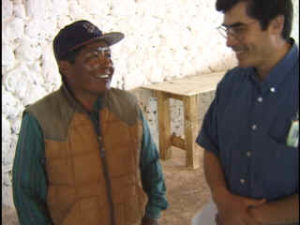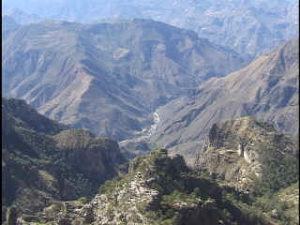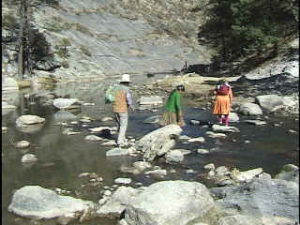
Alfredo translates my request to follow Melina’s family back to their home.
I wanted to talk with the Indian girl and her father, but I couldn’t speak their language. They also spoke Spanish and so Alfredo helped me make arrangements for me to go with them. Alfredo introduced me to Pedro and his daughter Melina. Pedro indicated he would allow me to go back to their home and videotape Melina in their home. Alfredo told me “they are an hour walk from here. I know where the village is. It is along the highway. What do you want to do?”
“Highway, that sounds good. Maybe I can make an appointment and meet them there for an interview.” Peg jumped in, “Kent, you know that you may never find them if you don’t go with them right now. You said you wanted to document one of our patients in more depth and this is just what you were looking for. You need to just go for it!”
I have to admit, the hour walk made me a little anxious, but all I needed was a little encouragement. I felt guilty in leaving. It was after 1 PM and would probably take the rest of the afternoon. I began to prepare for the journey. I took off my jacket. I knew I would be on the move most of the time and wanted as little as possible to carry. My Indian family was heading out the door and I followed out as I was putting on my Banana Republic photo vest. I quickly checked my pockets for a last minute evaluation of what I needed: camera, extra battery, and extra tape. All the important things were there. They had already left and now I had to jog to catch up. The mother with her one-year-old papoose strapped to her back had joined Pedro and Melina. I tried to get in front to catch their faces. I think they felt insulted that I thought they were going to slow and then they just sped up even more. At various points, I would stop to shoot video. Then I’d have to run to catch up. These were Tarahumari Indians and are renowned for their cross-county running ability. I had heard that there were some of US marathons that they aren’t allowed to race in on the grounds it wouldn’t be fair. This pace was indicative of much of the journey.

Melina and her father lived in the rugged Copper Canyon area.
We traveled through Guachochi to the edge of town. Pedro stopped at a store, about half the size of a 7/11 for some orange pop, a couple of limes, and a package of marshmallow-filled chocolate cookies. Soon we were on our way out of town. The pace was fast and after an occasional car passed, dust would bellow up from the road. Pedro led nearly twenty feet in front. I followed up at the end. The town road sloped uphill to the graveyard, and homes became less frequent. Outside town the road narrowed and slightly started downhill. We then started following a well-defined path that cut through some fenced properties and continued down into a deep canyon. Then the trail became radically steeper and less traveled.
The deep steep canyons here were contributaries to the Copper Canyon, which is the deepest in North America, including the Grand Canyon. However, here there are more vegetation and trees. I shot video on the move, but for a steady shot I’d have to stop. Then I would be farther behind and would have to run to catch up. I was gasping for breath and felt my heart pounding. I was pushing myself, but thought I could handle it for the next half-hour.

Melina and her family crossing the river at the valley bottom.
Finally we reached the valley bottom and found a rock path to cross the river. My legs were burning, and the short distance across the bottom hadn’t offered any significant relief. I had almost closed the gap, when I saw a great “photo-op” of Pedro and his family crossing the river bottom. Though I is was in my mid-fifties, I could have kept up if it wasn’t for having to take video…really. Pedro increased his lead and now was starting up the far side of the canyon before I had even started to cross.